Best reverb plugins 2025: Amazing space-makers for your DAW
Add atmosphere and pro polish to your mixes with these powerful reverb plugins
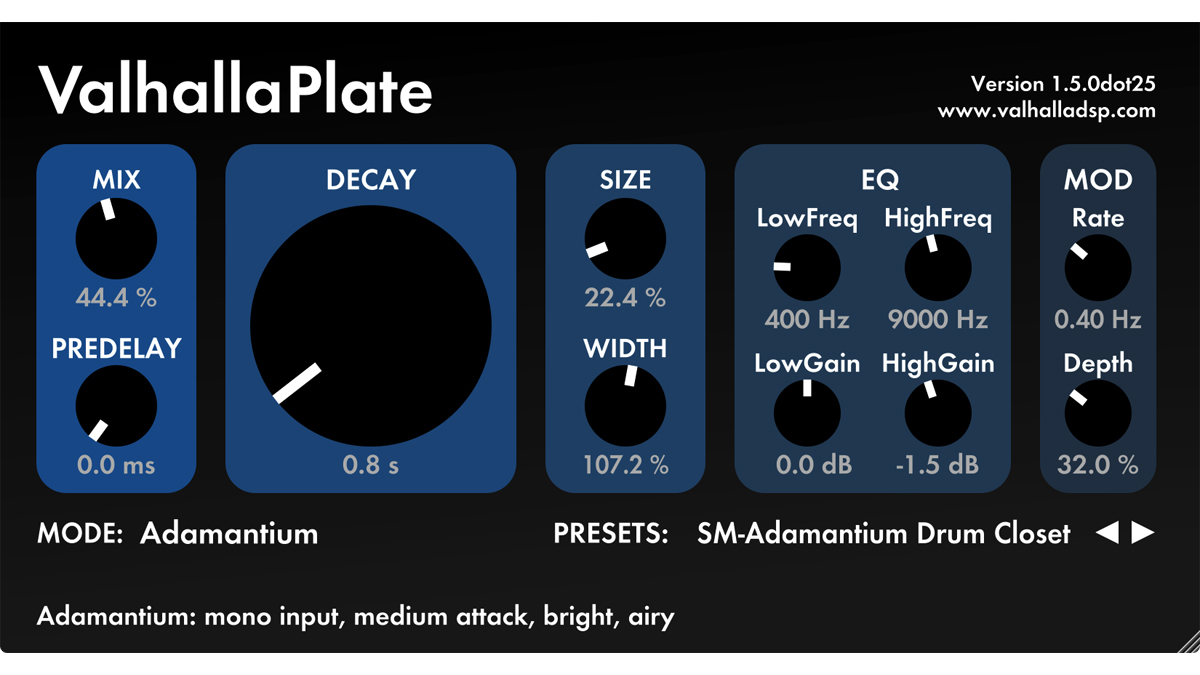
Using one of the best reverb plugins is a great way to transform dull and lifeless tracks into more atmospheric and 'human' mixes. Reverbs recreate the sound of a room or space, emulating the reflective atmosphere such a space would impart to a sound recorded within it.
They, therefore, add realism and character, helping to make cold and clinical digital recordings warmer and more emotional. Here, we round up the best reverb plugins to see which ones deliver the best character and sound for your money.
In this buyer's guide, we have reverbs of all prices and types that deliver the sounds of spaces of all shapes and sizes - everything from real recording studios and concert halls to unreal worlds straight out of your imagination. We've included some classics that are still going strong after many years plus the best releases from the last couple of years.
At the end of this buyer’s guide we have more advice on choosing between the main two types of reverb - convolution and algorithmic - so if you want to read up on these, skip to the end. Right now, we'll detail our top reverb picks before reviewing all of our reverb choices in more detail.
Looking to make music software savings this Black Friday? Shop our handpicked selection of the best Black Friday plugin deals.
Best reverb plugins: Our top picks
We have reviewed a vast range of reverbs for a wide range of tasks, but you could arguably split all of them into one of three categories: mix, creative, and emulation.
Our favorite reverbs in the former category are still the mighty Valhalla DSP Valhalla Plate and FabFilter Pro-R. Both developers have such form in software effects that you’re pretty much guaranteed great results with either of their logos on a plugin. Valhalla also has more great reverbs to choose from aside from Valhalla Plate, and in all honesty, you can take your pick from any of them.
For more creative options, Eventide's Blackhole offers such extreme spaces and parameters that you can use it to travel through a universe of reverb options. Baby Audio's Crystalline can be used both as a mix and creative option, but when used creatively you can use it as recklessly as you like, confident in the knowledge that it contains enough easy controls to reel yourself back in time and space should you need to.
Finally, when it comes to real-world reverbs, one plugin stands out and has done for a couple of decades - Altiverb 7. With a still increasing number of real-world emulated spaces on offer, you can experience a world of studio live rooms and opera houses from the comfort of your studio. This reverb might cost more than others on test here, but think of the savings you'll make in travel costs…
Best reverb plugins: Product guide
Specifications
Reasons to buy
Reasons to avoid
Frankly, we could have chosen any from Sean Costello’s amazing roster of reverb plugins for inclusion here, but to our minds, ValhallaPlate stands out as offering far more flexibility than the average plate reverb emulation - not to mention sounding absolutely gorgeous.
You get 12 plate modes, each with its own colouration, character and stereo presence; Predelay, Decay (up to 30s), Size, Width and EQ controls provide ample shaping possibilities; and chorus-style LFO modulation (0.05-5Hz) can be dialled-in to thicken things up.
Based on in-depth analysis of multiple EMT 140 plates, and representing ridiculous value for money, ValhallaPlate is utterly essential.
Read the full ValhallaDSP ValhallaPlate review
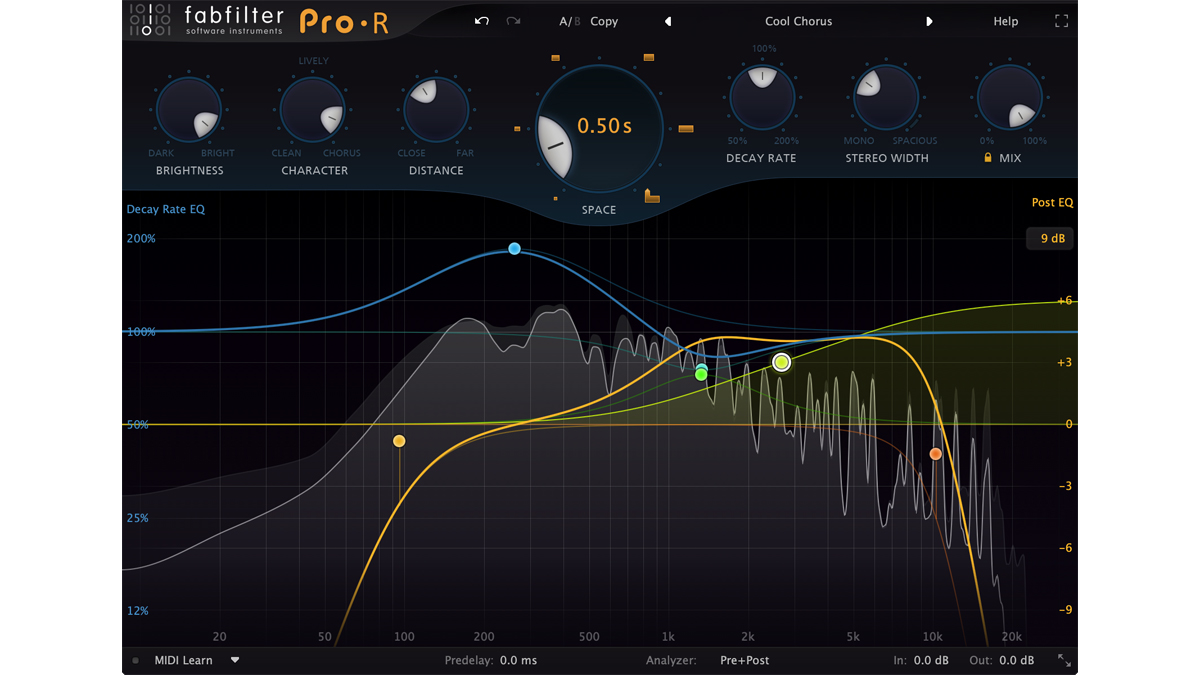
Specifications
Reasons to buy
Reasons to avoid
FabFilter’s reverb contender puts ease of use at the top of the agenda, with just six controls (plus dry/wet mix) governing a host of under-the-hood processes, including smoothly interpolated transitioning through “over a dozen” algorithms with the Space knob, which also sets the decay time from 0.2-10s, scalable from 0.1-20s with the Decay Rate control.
A six-band EQ is also onboard, and the innovative Decay Rate EQ works like a regular EQ, but with the response curve defining the decay time across the frequency spectrum - clever and hugely effective stuff.
An intuitive, focused workhorse with a fabulous sound.
Read the full FabFilter Pro-R review
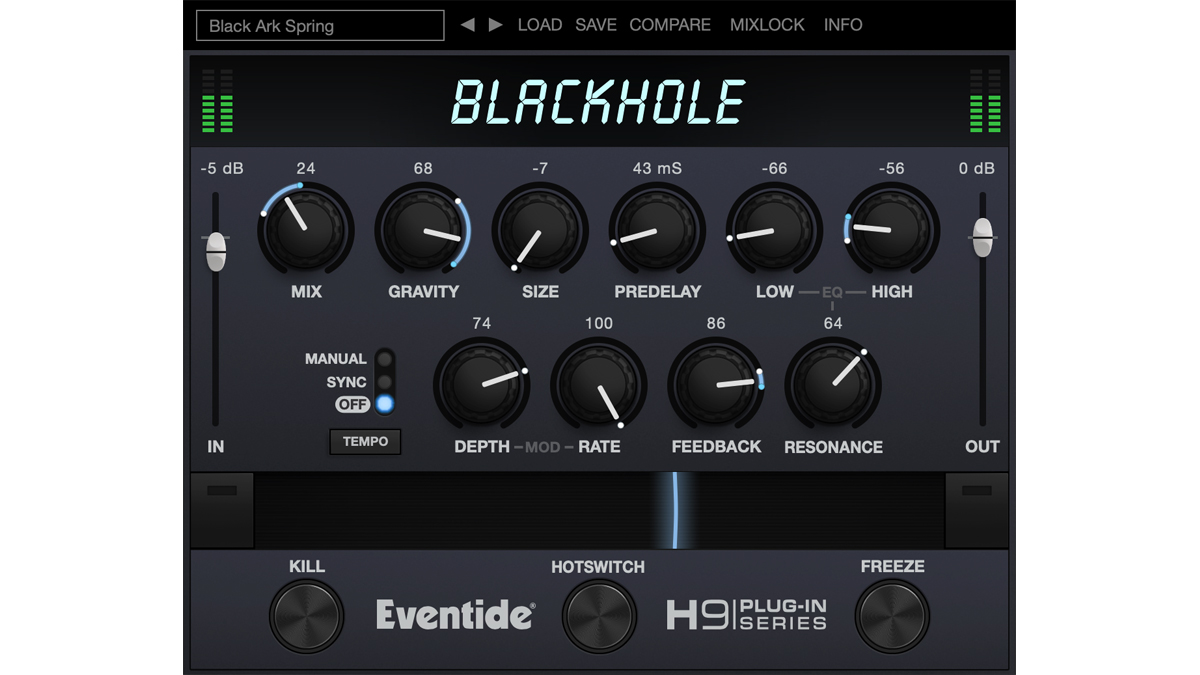
Specifications
Reasons to buy
Reasons to avoid
While the majority of reverbs in our list are primarily aimed at creating realistic rooms, halls, plates, etc, Blackhole - originally an algorithm in Eventide’s legendary H8000 Ultra-Harmonizer - is specifically aimed at sound designers looking to realize wholly unreal spaces in their Mac, PC or iPad DAW.
The interplay between controls (most notably the bipolar Size and Gravity knobs) invites real-time manipulation, and the brilliant Hotswitch and Ribbon Controller jump and morph between two complete parameter states, for wild spatial switches and transitions.
Definitely not the ’verb to turn to for conventional mix treatments, Blackhole is uniquely excellent at huge, evolving soundscapes and weird ambiances.
Read the full Eventide Blackhole review
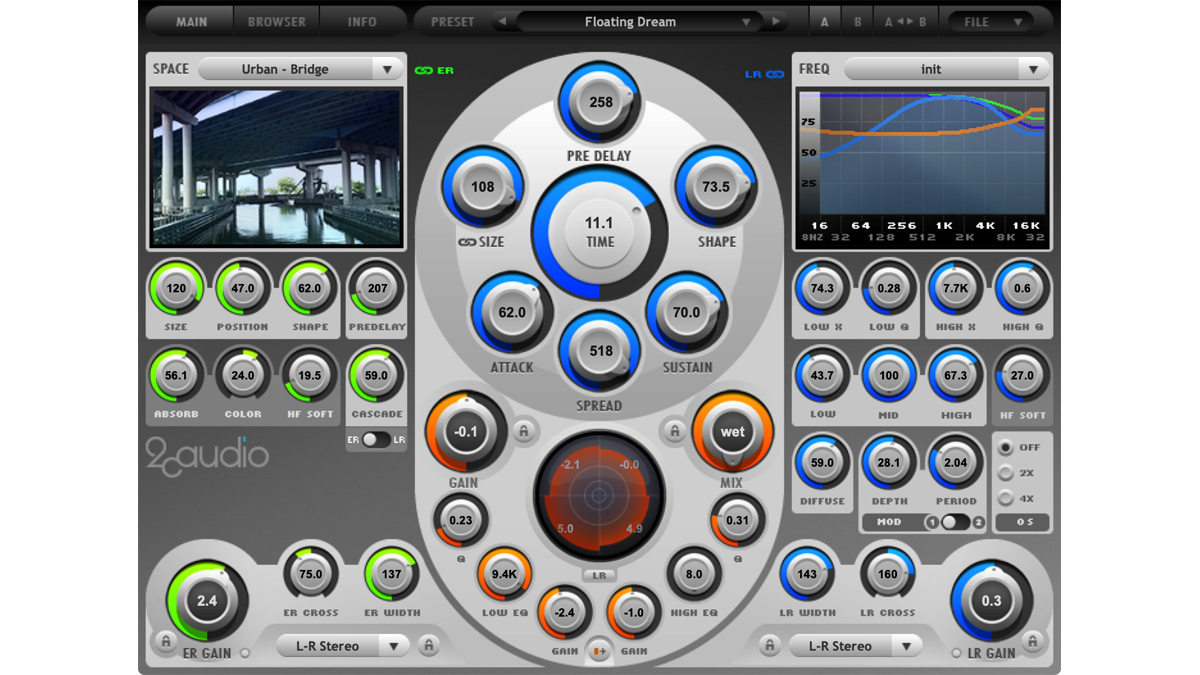
Specifications
Reasons to buy
Reasons to avoid
An oldie but a goodie, 2CAudio’s 2009 debut is still one of our go-to algorithmic reverbs, and although the GUI is looking decidedly lo-fi these days (please, 2C, at least make it scalable!), the virtual environments that Aether conjures have to be heard to be believed.
Fair bristling with knobs, the plugin offers an insane degree of control over the early and late reflections, including 33 transformative ER spaces and up to 120s decay time, as well as detailed frequency shaping (input and LR EQ), modulation, and tail envelope adjustment.
Complex and deep, Aether is a mixing and sound design powerhouse.
Read the full 2CAudio Aether review
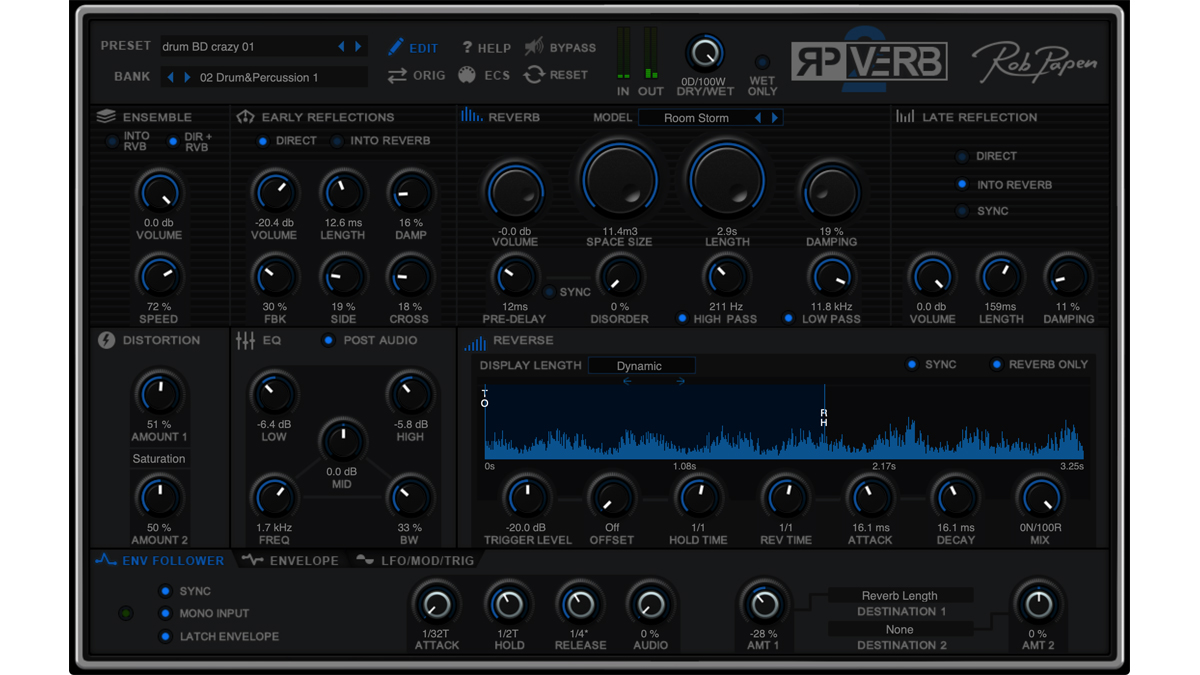
Specifications
Reasons to buy
Reasons to avoid
Somewhat easier to get to grips with than its intimidatingly busy interface might suggest, RP-Verb 2’s many processing stages take in distortion, chorus, and EQ alongside the central ER/LR/Reverb sections, and can be brought to life with the Envelope, Envelope Follower and LFO modulation sources; while the Reverser mixes forward and reverse reverbs to great effect.
Another sound design-orientated plugin that specializes in “hyper-real, scintillating” spaces suitable for modern pop and dance production, Rob Papen’s second-gen marvel requires more care and attention than most but delivers results that you simply couldn’t get any other way.
Read the full Rob Papen RP-Verb 2 review
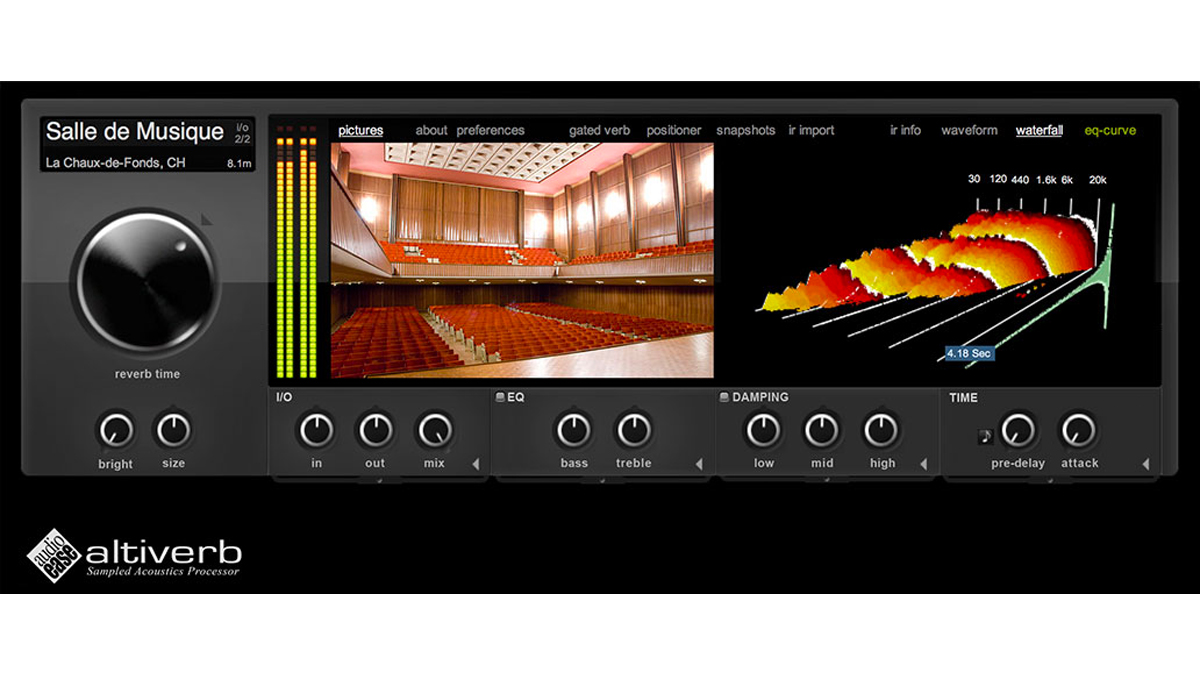
Specifications
Reasons to buy
Reasons to avoid
The world’s first real-time convolution reverb plugin has lost none of its appeal since the launch of v1 in 2002.
At the heart of Altiverb 7 is a huge library of impulse responses precisely capturing the ambient qualities of a broad array of famous studio rooms, stadiums, halls, cathedrals, industrial locations, and more, as well as vintage reverb hardware, plates, etc.
Expensive but worth every penny to the serious producer/engineer, this is the finest solution money can buy when it comes to placing acoustic instruments and vocals in thoroughly convincing real-world spaces.
Read the full Audio Ease Altiverb 7 review
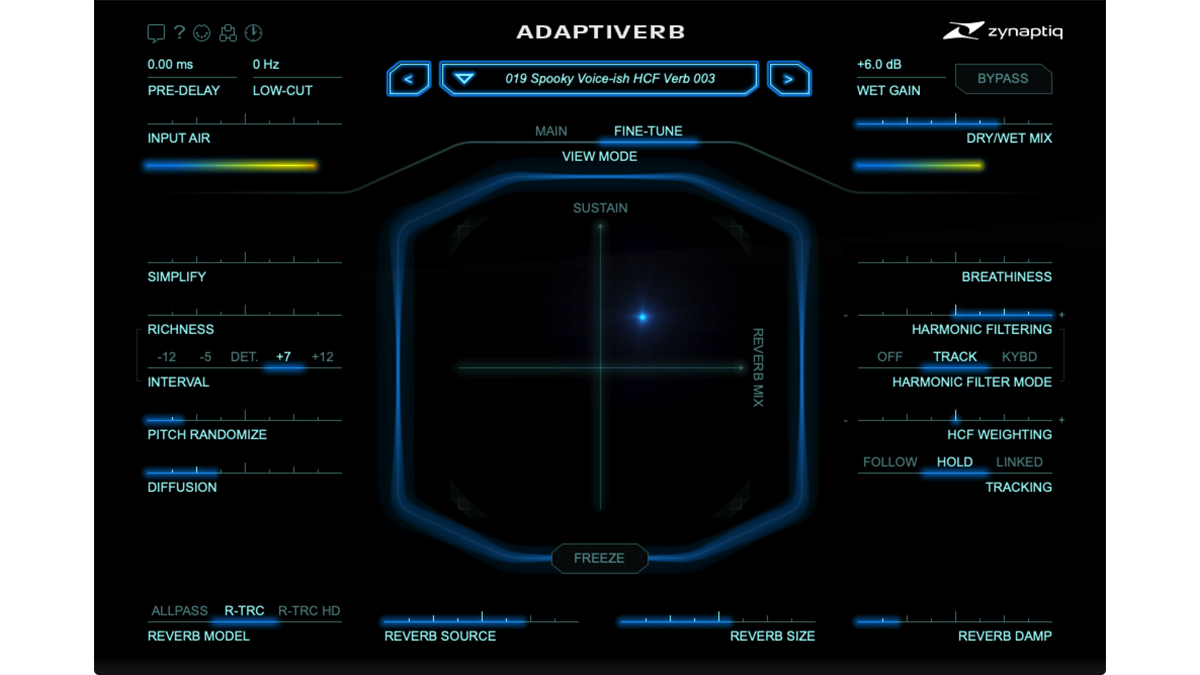
7. Zynaptiq Adaptiverb
Our expert review:
Specifications
Reasons to buy
Reasons to avoid
Summarised by the developer as a “harmonic tracking resynthesis reverb” that does its thing “without obscuring the source”, Adaptiverb deploys a machine learning algorithm (the Bionic Sustain Synthesiser, no less) to synthesize a reverb tail based on the characteristics of the incoming source material.
The upshot is an impressive symbiosis of the dry and wet signals, the exact tonal and frequency-based relationship between them adjusted using the Harmonic Contour Filter, which can even conform the tail to specific note pitches.
This might all come across as very ‘sound design’, but Adaptiverb is equally at home invoking smooth conventional spaces, making it every bit as versatile as it is futuristic.
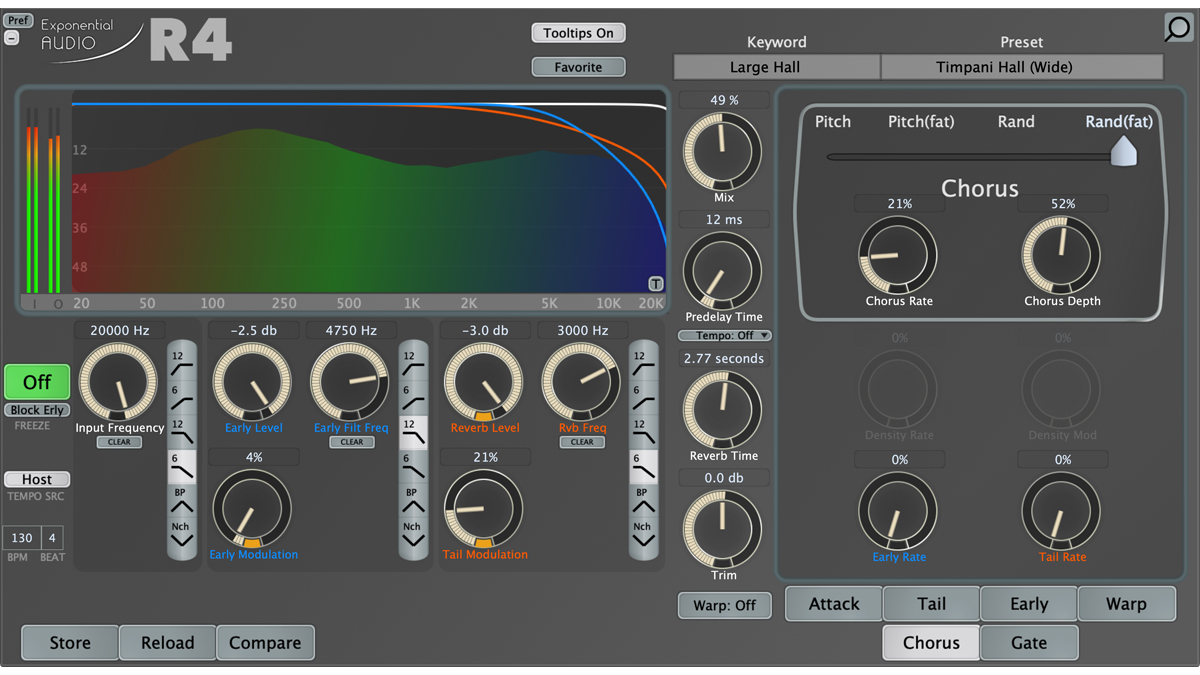
Specifications
Reasons to buy
Reasons to avoid
Now owned by Boston-based software powerhouse iZotope, R4 is the flagship model in ex-Lexicon engineer Michael Carnes’ Exponential Audio-branded range of high-end software reverbs.
Don’t let that drab, some-might-say-ugly interface put you off - this is unarguably one of the best reverbs on the market, housing an incredible variety of tweakable parameters with which to adapt its spectacular, luxurious reflections and tail to your tracks.
There are four core algorithms (Plate, Chamber, and two stunning Halls), filters aplenty, modulation galore, independent ER/tail widening, tail ducking, dedicated Gate and Chorus modules, compression/expansion, distortion, and more, and it all comes together brilliantly in a pricey triumph of a plugin.
Read the full Exponential Audio R4 review
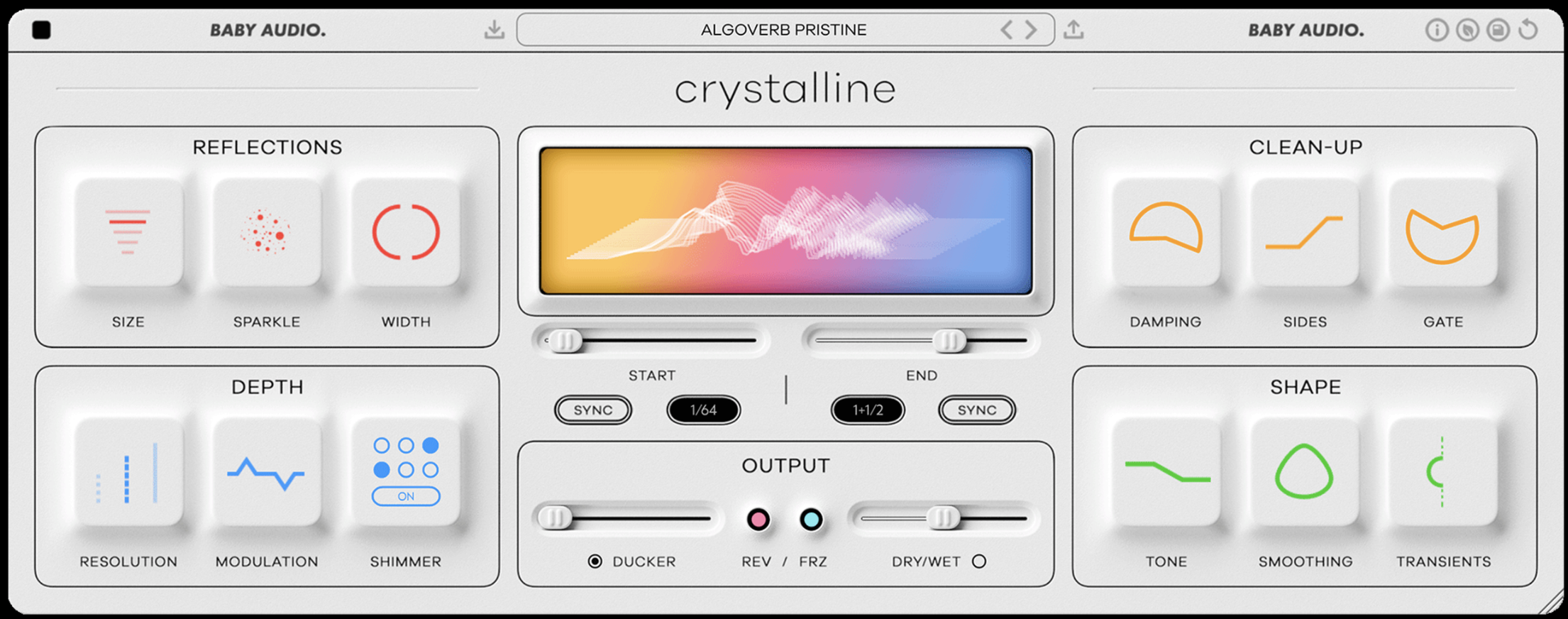
Specifications
Reasons to buy
Reasons to avoid
With relatively simple and intuitive controls but powerful audio processing under the bonnet, Baby Audio puts the music first and the science second. The company’s Crystalline reverb is the perfect example. It’s an algorithmic reverb with an attractive UI but delivers Lexicon-style quality from powerful algorithms.
Crystalline's main controls are spread over four blocks: Reflections, Depth, Clean-up, and Shape. They each feature three buttons with which you can control parameters by clicking or dragging. You can, for example, easily tame reflection amounts by clicking or altering the Width parameter by dragging. Parameter changes can be dramatic (modulation adds fantastic swirl) or subtle (smoothing makes the reverb less harsh). Crystalline is intuitive and encourages experimentation, and we love the Clean-up section which does exactly that when your experiments (inevitably) go too far.
While over 300 presets amply demonstrate how great Crystalline sounds, your own tinkering will give you the biggest payoff, and you can stay safe in the knowledge that whatever you do will almost certainly sound great.
Read the full Baby Audio Crystalline review
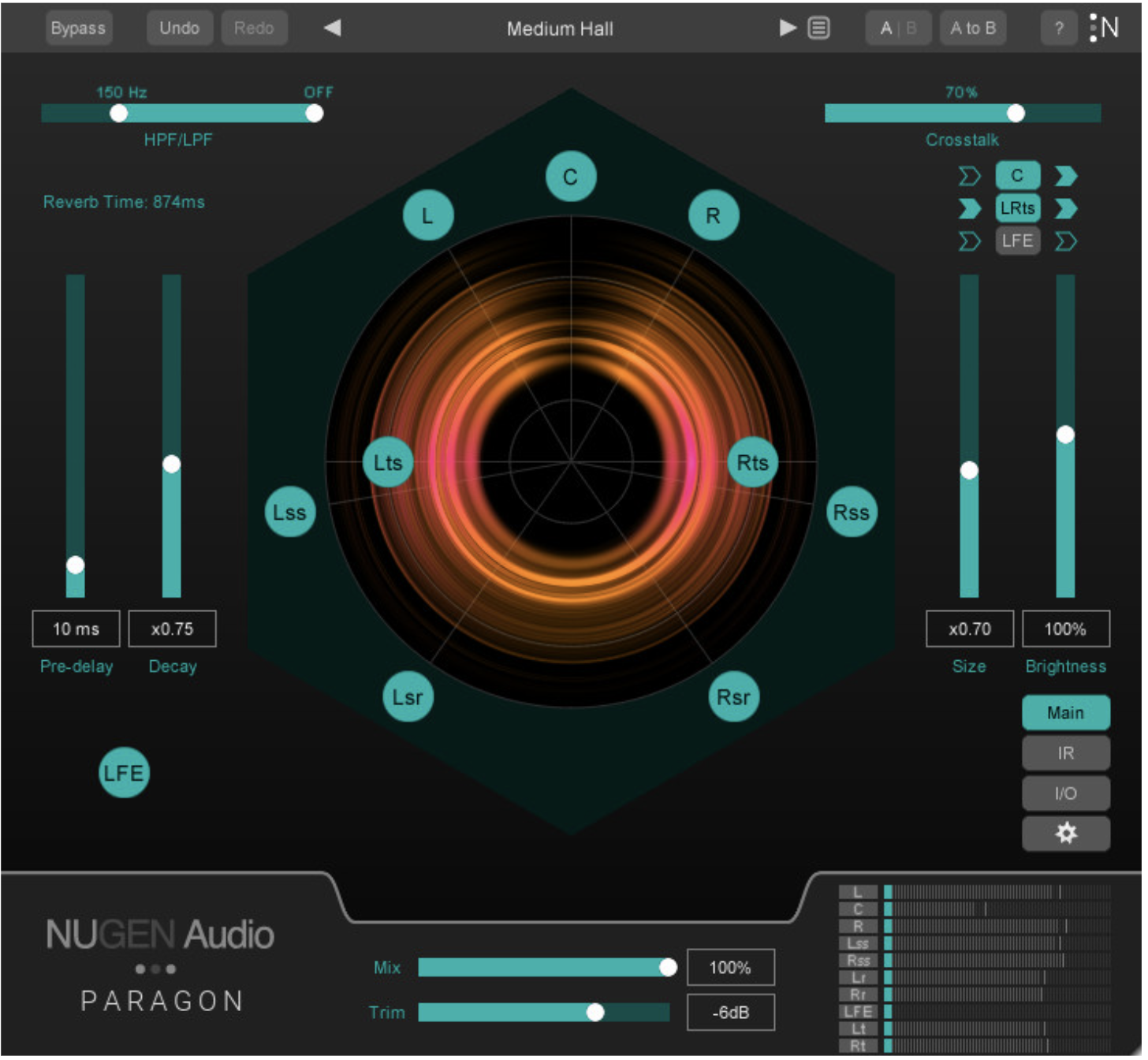
Specifications
Reasons to buy
Reasons to avoid
Nugen Audio's Paragon has the honour of being the world’s first 3D-compatible convolution reverb but also offers the kind of control that you’d usually find on an algorithmic reverb. It comes pre-loaded with room impulse response samples, but it’s possible to re-shape these and alter the room size, decay levels, frequency damping and brightness. This all happens within the blink of an eye, with no noticeable artefacts.
From cavernous halls, gloomy churches, airy rooms and reflective clubs, the real spaces have been meticulously captured. These presets are easily labelled and aren’t overwhelming in number - and that’s kind of the point. They serve as good groundings to start your own journey into crafting the perfect, nuanced space for your project. With up to 7.1.2 audio channels and Dolby Atmos compatibility, Paragon can be all things to all people.
Nugen has crafted a reverb of remarkable scope, with the authenticity of the room sounds - even after excessive tweaking - being truly impressive. Those working in sound design, soundtracking or audio post-production will find Paragon to be an outstanding space designer.
Read the full Nugen Audio Paragon review

11. D16 Group Spacerek
Our expert review:
Specifications
Reasons to buy
Reasons to avoid
Like an increasing number of modern reverbs, D16 Group's Spacerek seems to have elements of both algorithmic and convolution reverbs mixed together - that is, it uses modelled spaces but gives you more control over them. However, where Spacerek differs is that it is designed to create those real-world spaces without the need for complex parameters and controls. Spacerek is capable of creating interesting and rich reverb spaces that don’t sound unnatural but still let you push things further for some unique results.
Each of Spacerek’s 114 reverb models has a different virtual microphone, sound source and room size configurations, allowing for versatile sonic exploration. In the centre, you can set the volume for three reverb stages - Direct sound, Early reflections and Late reflections - and alter the stereo Balance for each. The latter job can be done in Left/ Right format or in a Mid/Side configuration. You could say, splay your early reflections out in the stereo field to give your sound a sense of location while reining in the tail to make it a little more mono, keeping the mix focused.
The presets give you a large variety of spaces and some experimental effects to play with and really do demonstrate the power of Spacerek. And all in all, while it may not have a flight deck full of controls, this is a plugin that really is capable of making your sounds take off.
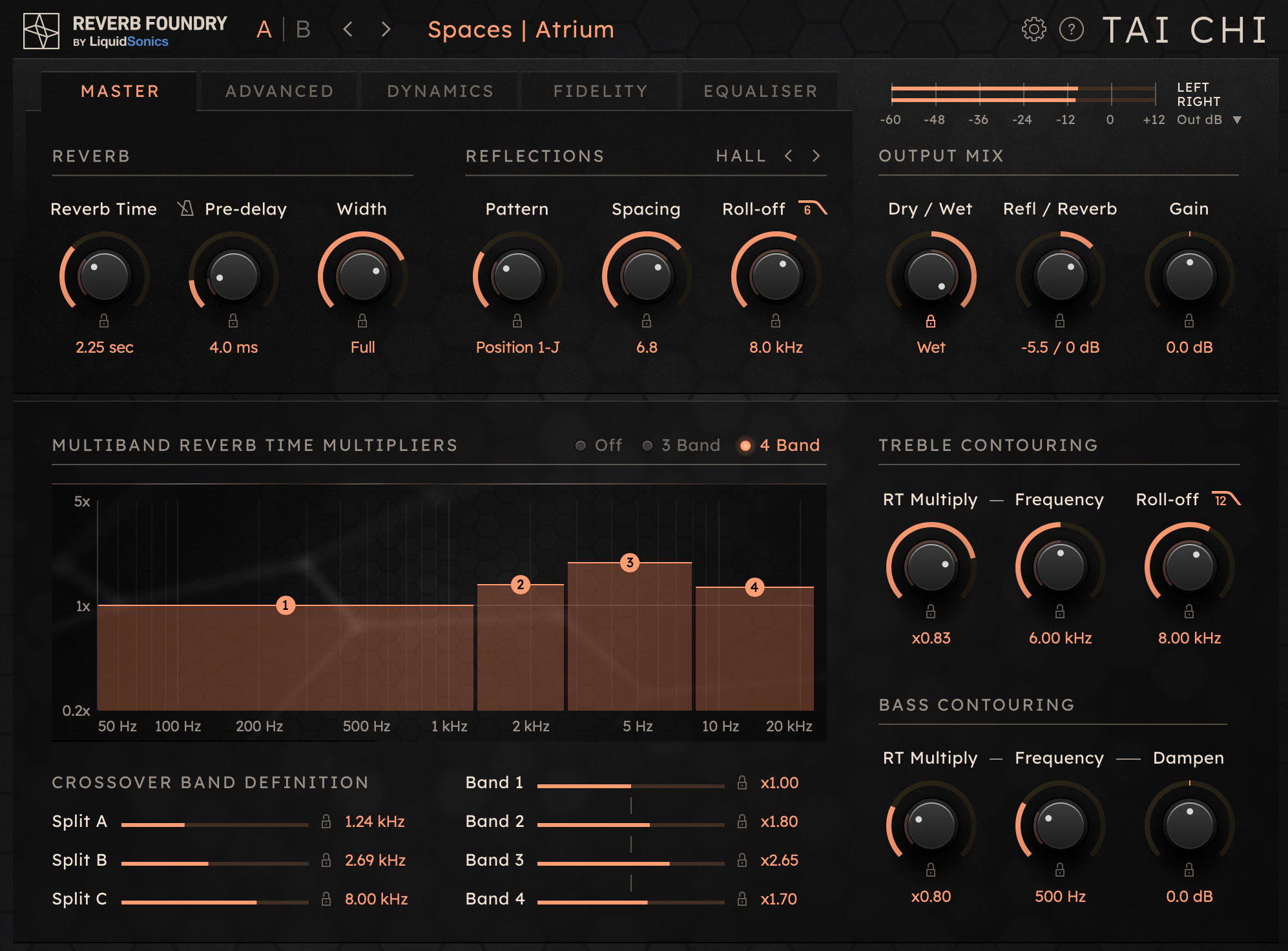
Specifications
Reasons to buy
Reasons to avoid
Yet another reverb that incorporates both convolution and algorithmic elements, Tai Chi is designed to bridge the gap between room reverb, sonic expansion and more cinema-aimed sound design via its extraordinary level of control. At heart, Tai Chi is a pulsing ensemble reverb, giving the means to amass spaces coated in chorus, and bringing fatter, multi-voiced sounds to your mix.
While standard Time, Width, Pre-Delay and Output Mix controls are present and correct, the Multiband Reverb Time Multiplier is where Tai Chi excels. It gives you the ability to create lush ensemble reverbs that tantalisingly move and morph, something that will surely be of interest to the sound design inclined. The shining beauty of Tai Chi lies in these lustrous chorused ensembles, bestowing the ability to fatten up guitar and synth sounds yet without the occasionally jarring pitch oscillations that can create dissonance.
Tai Chi provides seemingly limitless spatial control, ensemble generation and all manner of twisting and warping abilities. From our initial tests, it’s abundantly clear that it offers a richly rewarding route to making some space.
Read the full Liquid Sonics Reverb Foundry Tai Chi review
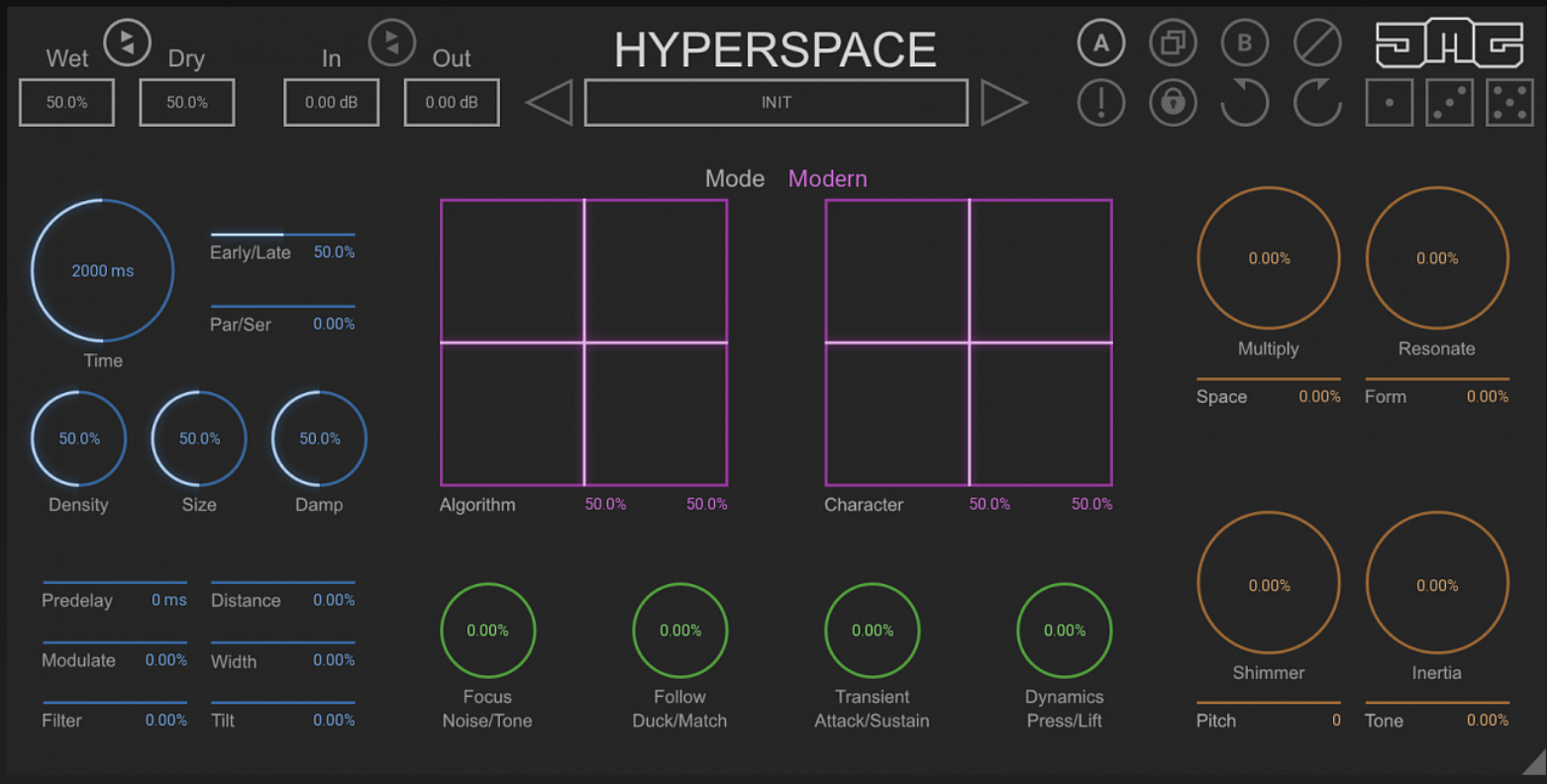
13. JMG Sound Hyperspace
Our expert review:
Specifications
Reasons to buy
Reasons to avoid
Hyperspace takes a flexible approach to the deployment of its onboard algorithms, enabling control of them using a couple of XY pads. The Algorithm XY pad is the more subtle of the two, with Character adding a more obvious influence to the tonal shape.
Hyperspace has a few more tricks up its sleeve. The orange section is home to four creative effects (Multiply, Resonate, Shimmer, and Inertia). Respectively, these multiply the early reflections, apply comb filtering, add pitch-shifting, and freeze the reverb, and each includes a further effect-specific parameter. As you might imagine, they are pretty transformative.
There are over 300 presets including some fabulous ones for traditional vocals, drums, and instruments. And if you do want to get creative but don’t know where to start, the dice icons on the top bar provide three degrees of parameter randomization.
Hyperspace is an incredibly rewarding reverb that excels at the creation of unique and creative spaces.
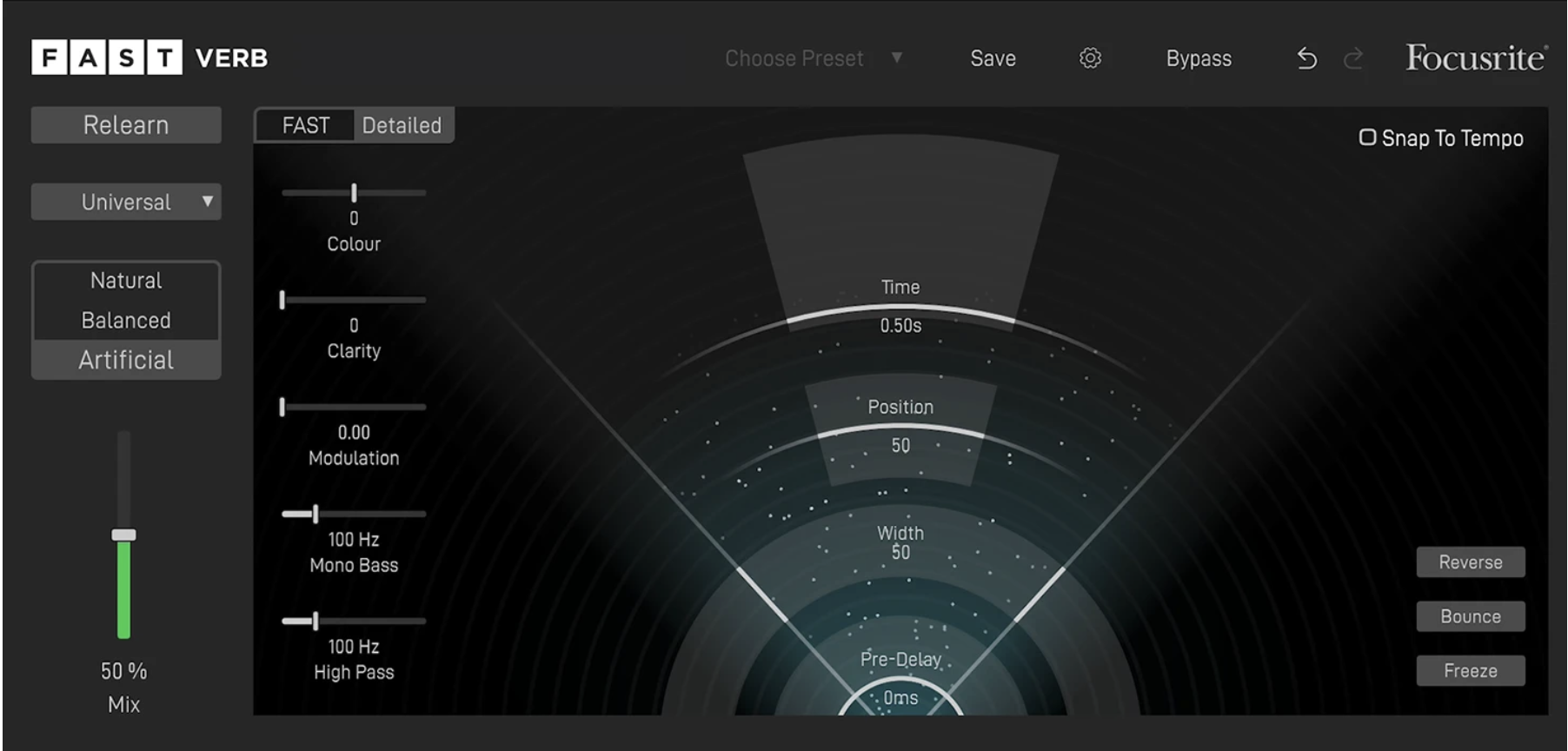
Specifications
Reasons to buy
Reasons to avoid
As with the previous FAST tools, one of the headline features of FAST Verb is the analysis tool that’s powered by Sonible’s AI tech. Simply play some audio into the plugin, hit Learn and the AI will suggest a reverb preset for you based on what it thinks will work best. Users can define a source type - from a list including drums, vocals, keys, guitar, and more - and then tailor the reverb style more by choosing between Natural, Balanced, and Artificial options.
FAST Verb has some great features that make it a deceptively handy creative effect. The interface is excellent, offering a clear visual representation of the main reverb parameters that respond dynamically to the output signal. There's also an advanced view that brings up sliders to adjust reverb color, monophonic bass cutoff, and a high-pass filter.
FAST Verb’s results are best in Natural mode. It’s great at generating subtle reverb effects you don’t really notice until the plugin is disengaged - the kind that can add a realistic sense of space and depth to, for example, a DI’d guitar or synth. However, it also excels at far-out creative effects.
FAST Verb isn’t quite like anything else on the market, and those capabilities are undoubtedly worth the price.
Read the full Focusrite FAST Verb review
Best reverb plugins: Buying advice
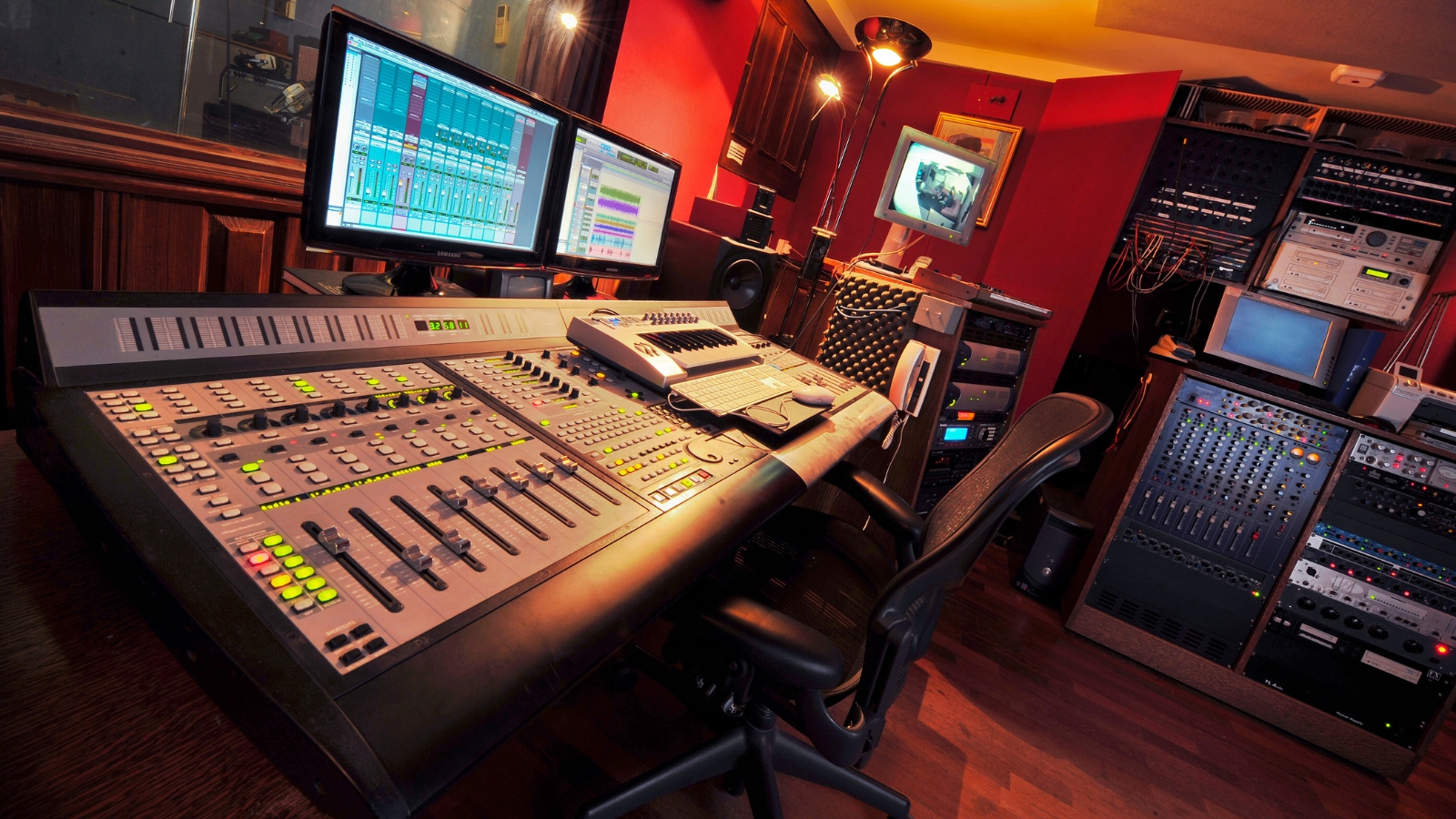
What is a reverb?
Reverbs recreate the 'sound' of a real or imaginary space. Whenever you sing or make a sound within that space, the environment around you has an effect on that sound. Put yourself in a room and any sound you make will be reflected off the walls ceiling and floor back at you, with reflections joining forces, mixing and eventually scattering and dying down.
This reverberated effect can add everything from a more real-world spatial sound to huge amounts of reflective atmosphere as the room size gets larger. Think of a cathedral, for example, and your reverb will impart many reflections and long decay times - perfect for ambient music!
Your DAW will almost definitely come with at least one stock reverb plugin, and while it probably delivers decent results, there are now so many great reverb plugins out there - and covering all budgets, from free upwards - that there's no reason why you shouldn't consider adding more reverb options to your music production arsenal. A new reverb can give you a better sound and perspective, and deliver everything from tight and subtle reflections to sounds that are literally out of this world.
What are the types of reverb?
There are two main types of reverb plugins: algorithmic and convolution. Algorithmic 'verbs use mathematical modelling to simulate the sound of the space (real or imaginary), while convolution reverbs use impulse responses to measure the sound of a real-world space or piece of gear. Think of this as sampling the sound of the room, as these IRs can then be applied to your recordings.
Convolution reverbs are usually based on real spaces or hardware reverbs and are often considered more natural and realistic, but only for specific spaces or gear. Algorithmic reverbs, on the other hand, are more flexible and can be more extreme; less natural, for specific spaces perhaps, although they can still be used to model specific rooms and gear. However, because of their extra flexibility, they can be better for sound design.
As you can see above there are an increasing number of newer reverbs that attempt to fuse elements of both types of reverb, some more successfully than others.
There are more algorithmic reverbs out there than convolution, and this is also reflected in our buyer's guide, and we would also consider these the best options for newcomers to reverb or those after a more general sound - another reason for our algorithmic focus.
If you want to buy more reverbs that emulate specific gear or locations, there are plenty on offer from the likes of Waves (IR-1), LiquidSonics (Reverberate 3) and AudioThing (Fog Convolver). Universal Audio has reverbs that emulate just about every piece of classic hardware and studio space you can imagine, often employing the company's exclusive Dynamic Room Modeling engine - a 'combination of signal processing and advanced measurement techniques'.
Are there any free reverb plugins?
All of the reverbs in our buyer's guide are paid-for options, but there are plenty of free reverb plugins out there too. Our favourites include TAL Reverb 4, u-He's Protoverb, and Valhalla's incredible Supermassive.
Related buyer's guides
MusicRadar's got your back
- Best guitar VSTs to supercharge your recordings
- Best vocal plugins
- Best drum machine plugins
- Best synth plugins
- Best saturation plugins
- Best delay plugins
- Best creative multi-effects plugins
- Best compressor plugins
- Best EQ plugins
Want all the hottest music and gear news, reviews, deals, features and more, direct to your inbox? Sign up here.
A music and technology journalist of over 30 years professional experience, Ronan Macdonald began his career on UK drummer’s bible, Rhythm, before moving to the world’s leading music software magazine, Computer Music, of which he was editor for over a decade. He’s also written for many other titles, including Future Music, Guitarist, The Mix, Hip-Hop Connection and Mac Format; written and edited several books, including the first edition of Billboard’s Home Recording Handbook and Mixing For Computer Musicians; and worked as an editorial consultant and media producer for a broad range of music technology companies.
